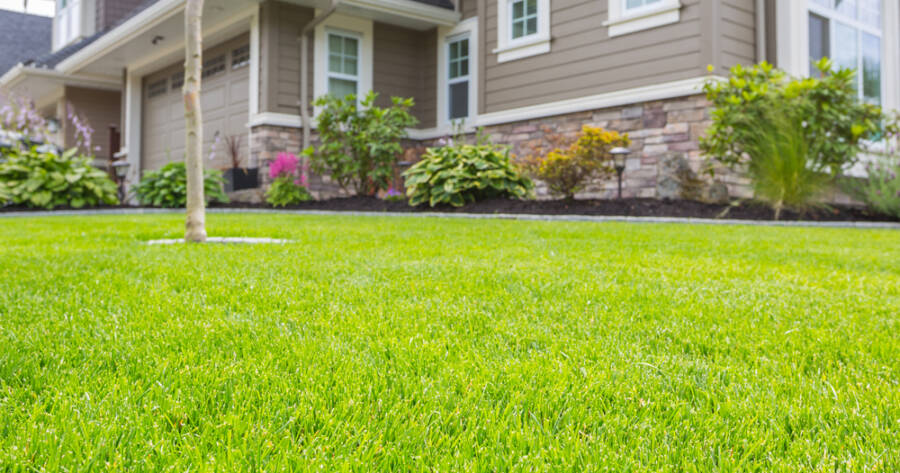A lush, green lawn is the hallmark of a well-maintained home. It boosts curb appeal, provides a welcoming outdoor space, and even increases property value. But achieving that picture-perfect patch of grass takes more than just occasional mowing. From proper watering to soil care, keeping your lawn healthy year-round requires consistent effort and the right techniques. Whether you’re a new homeowner or a seasoned green thumb, understand everything you need to know to keep your lawn looking flawless.
Mow the Right Way
Mowing may seem simple, but how and when you mow makes a big difference. Cutting your grass too short can stress the roots, making it more vulnerable to drought and weeds. As a general rule, never remove more than one-third of the grass blade in a single mowing session.
Keep your mower blades sharp for a clean cut and mow in different patterns each time to prevent soil compaction and grass wear. During peak growing seasons, mowing once a week is ideal, while cooler months require less frequent maintenance.
Water Wisely
Watering is essential, but more water doesn’t always mean healthier grass. Instead of daily shallow watering, aim for deep, infrequent watering, typically once or twice a week. This encourages deep root growth and makes your lawn more drought-resistant.
Water early in the morning to reduce evaporation and allow blades to dry before nightfall, which helps prevent disease. Depending on your climate, most lawns require about one inch of water per week, including rainfall.
Feed Your Lawn
Just like any other plant, grass needs nutrients to thrive. A balanced fertilizer containing nitrogen, phosphorus, and potassium will promote healthy growth, color, and root development.
Apply fertilizer 2 to 4 times per year, depending on your grass type and local conditions. Spring and fall are generally the best times for feeding. For the most accurate results, conduct a soil test to identify nutrient deficiencies and tailor your fertilization plan accordingly.
Aerate the Soil
Over time, soil can become compacted, especially in high-traffic areas. Compacted soil restricts root growth and limits the flow of air, water, and nutrients.
Aeration involves perforating the soil with small holes to allow better circulation. Use a manual or mechanical aerator once a year, typically in the fall or spring, to keep your lawn’s root system strong and healthy.
Control Weeds
Weeds compete with grass for nutrients, water, and sunlight. The best defense is a thick, healthy lawn that naturally crowds them out, but you’ll still need to spot-treat persistent intruders.
Use a pre-emergent herbicide in early spring to stop weed seeds from germinating and a post-emergent herbicide for visible weeds. Always follow label instructions carefully, and avoid over-application, which can damage your lawn.
Manage Pests and Diseases
A yellowing lawn, brown patches, or dying grass can signal pests or disease. Common culprits include grubs, chinch bugs, and fungal infections.
Routine maintenance like proper mowing, watering, and fertilizing goes a long way in preventing problems. If issues persist, consult a lawn care professional or local extension service to identify the cause and choose the best treatment option.
Choose the Right Grass Type
Not all grass is created equal. Your region’s climate, sunlight levels, and soil conditions play a huge role in selecting the right variety.
- Cool-season grasses (like fescue or Kentucky bluegrass) thrive in northern climates.
- Warm-season grasses (like Bermuda or zoysia) are better suited to southern regions.
Selecting the right type means less maintenance and better results year-round.
Seasonal Care Tips
- Spring: Aerate, dethatch if needed, and apply fertilizer and pre-emergent weed control.
- Summer: Water deeply, mow regularly, and watch for signs of heat stress or pests.
- Fall: Fertilize, overseed bare spots, and clear leaves to avoid suffocating the grass.
- Winter: Avoid foot traffic on frozen grass and prep tools for the upcoming season.
A Lawn You’ll Love
A perfect lawn doesn’t happen overnight, but with the right care and consistency, it’s within reach. Focus on building healthy soil, choosing the right grass, and maintaining smart habits throughout the year. Your reward? A vibrant, resilient lawn that’s the envy of the neighborhood.

